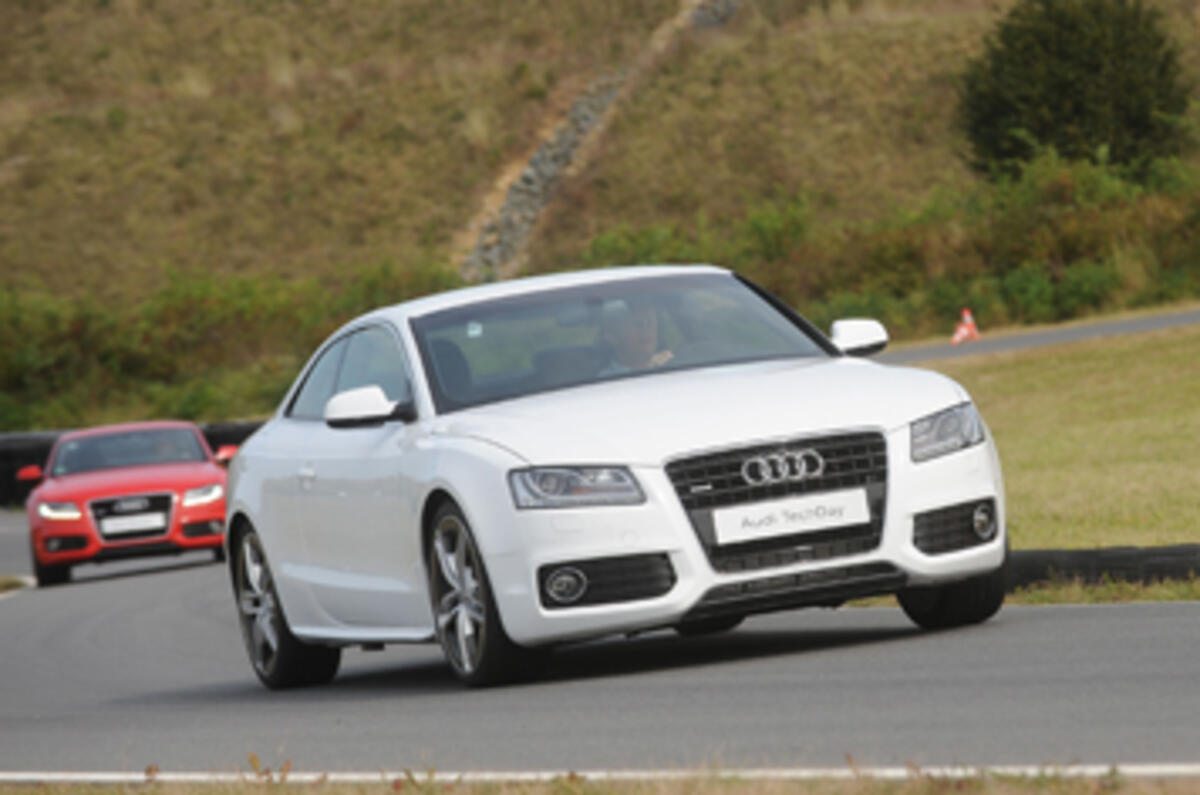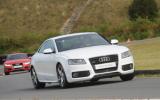What is it?
Audi’s experimental lightweight version of the A5 coupe. The standard A5 is built around a conventional steel monocoque chassis, but this car is built around an aluminium spaceframe chassis, clad in aluminium panels. The boot and bonnet are made from carbonfibre-reinforced plastics.
Under the skin of the prototype is Audi’s familiar 2.0 TSI turbocharged engine, wound up to 208bhp and driving all four wheels.
Audi says this car points the way forward for the company. Aluminium construction will become more common, allowing future cars to benefit from all-round ‘downsizing’.
This means four-cylinder engines instead of sixes, smaller brakes, wheels and tyres, smaller fuel tanks, better economy and – most important – much-improved ride and handling.
This latter claim is said be a consequence of reducing unsprung weight and, for high-performance models, using lighter, shorter engines that sit further back in the engine bay.
Overall this car is 230kg lighter than a standard-issue A5 3.2 V6 quattro, the performance of which Audi says the lightweight coupe can match despite its power shortfall.
Company engineers say the A5’s aluminium spaceframe construction saves around 110kg over the standard car and the carbonfibre lids save around 50kg. Another 25kg is shaved off by using a four-cylinder engine. The final 45kg comes with ‘hybrid’ brake discs (which are made from gray cast iron, bolted to aluminium centres) and new lightweight wheels.
Audi has also embarked on a general programme of shaving back the weight of all under-skin components, introducing plastic clutch pedals and seats backs as well as detail refinements such as superlight exhausts and even aluminium bolts and screws.
What’s it like?
Autocar had a chance to try the two A5s back to back on a few quick laps of the Bosch test track at Boxberg.
The 3.2-litre A5 (thankfully without S-line suspension) was smooth, torquey, brisk and surprisingly agile on switchbacks, though that was partly thanks to the quattro drivetrain and its positive effect on the A5’s weight distribution.
The lightweight A5 was markedly different. Its weight advantage was starkly obvious, resulting in rather less of a GT feel and more that of a nippy hot hatch. And it did change direction more quickly, losing much of the slight ponderousness that remains in even the new-generation, longitudinally engined Audis.
However, the rougher four-cylinder engine and its gruffer soundtrack were at a marked disadvantage to the sweet V6 unit. Although future A5 buyers will appreciate the car’s newfound fleetness, they could miss the cultured response of a big engine and the luxury overtones that are a consequence of weighty chassis responses.
Audi engineers say they are well aware of this problem and promise the next generation of four-cylinder engines will have to be both much smoother and more aurally upmarket.
Sadly, the smooth Bosch track prevent us from making any definitive statement on the claimed improvement in ride quality, but the dramatic lighter brake discs and wheels will be a huge help on broken UK roads.








Join the debate
Add your comment
Re: Audi A5 lightweight prototype
The A5 is infamous as being the least reliable vehicle on sale in the UK today - I'd have thought Audi should be directing their attentions some place other than lightweight materials. Then again, any plan to improve the ride quality of their cars should be applauded as it'll open them up to a whole new market of sane people.
Even so I still don't buy it. As others have said, aluminium cars are significantly more costly to repair and to insure. You need specialist equipment for riveting, welding and bonding, plus specialist technicians and specialist hand tools to go with them. I guess there will come a time when the number of aluminium cars being made causes the number of repair centres to rise accordingly, but until that time the real world benefits of lightweight construction will continued to be dwarfed by real world bills.
Re: Audi A5 lightweight prototype
As I already stated, let's see what it weighs as tested - every Jaguar Autocar has tested recently has been a lot heavier than the claimed figure.
Re: Audi A5 lightweight prototype
Still, Audi is still being more innovative than its national stablemates.